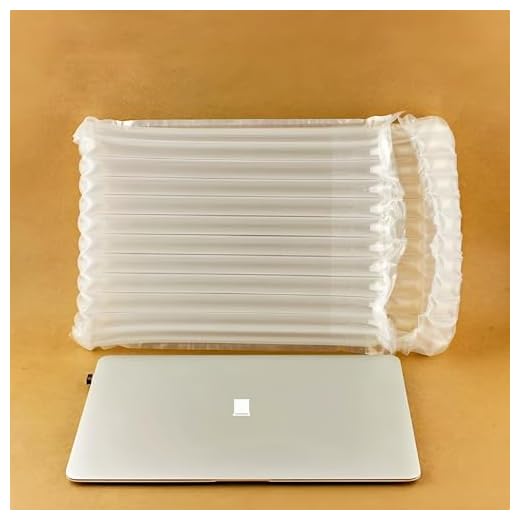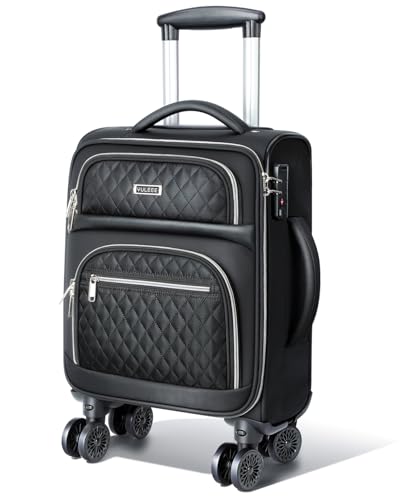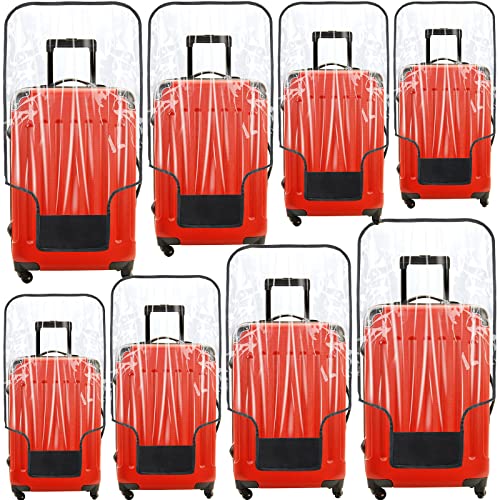



If accompanying passenger, accept the checked-piece option at the airport: most commercial carriers set a standard allowance of 23 kg / 50 lb and a maximum linear dimension of 158 cm / 62 in per piece; an overweight threshold is commonly 32 kg / 70 lb. Typical U.S. domestic fees: $30 for the first checked piece, $40 for the second; overweight and oversize surcharges generally fall between $100 and $400 depending on weight and dimensions. For international sectors, many carriers include one piece at 23 kg in economy fare rules.
If no passenger, arrange transport via air-cargo or express freight: pricing uses the greater of actual and volumetric weight–volumetric weight = L × W × H (cm) / 6000 or L × W × H (in) / 166. Expect transit windows: consolidators and standard cargo typically move domestic consignments in 1–5 business days, international consolidated freight in 3–14 business days, and premium express in 1–3 business days. Typical door-to-door cost ranges: domestic $50–$500 (size-dependent), international $150–$1,200+.
Packing protocol: use a rigid case, reinforce corners, surround contents with foam or inflatable padding, remove previous travel tags, affix a new external ID and the airway bill (AWB) number. For passenger-checked pieces use TSA-approved locks; for freight consignments expect possible inspection so locks may need to be removable. Measure and weigh at drop-off; carriers bill on declared or verified weight/dimensional weight.
Regulatory and prohibited-item rules: spare lithium-ion cells are generally not accepted in checked or cargo consignments and must be transported in the cabin or handled under special Dangerous Goods procedures; batteries installed in devices should be powered off and terminals protected. Liquids must comply with applicable rules; firearms require advance notification, a locked hard case, and completion of the carrier’s firearm declaration. Customs clearance for international moves requires a commercial invoice or owner’s declaration, and may incur duties and taxes based on declared contents and value.
Risk management and claims: request an AWB and use trackable service; photograph contents and external condition before handover. Purchase declared-value coverage or third‑party insurance (market rates often ~1–3% of declared value). File visible-damage claims within 7 days of delivery and loss/delay claims within 21 days; retain receipts, tags and the AWB for any claim submission. Compare carrier rules, transit time, and total landed cost before confirming the booking.
Transporting a suitcase via air-cargo: practical steps and typical costs
Book cargo space minimum 72 hours before departure and request written acceptance criteria from the carrier’s cargo desk.
Typical pricing: domestic consolidated air-freight for a single travel case usually ranges $50–$250; dedicated cargo rates commonly run $4–$12 per kg depending on route and service speed. Expect minimum charges (often 20–30 kg equivalent) and additional handling, security and fuel surcharges. Express door-to-door options can cost 2–4× standard cargo rates.
Dimensional weight calculation: use metric volumetric divisor 6000 (volumetric kg = L×W×H in cm ÷ 6000). Carriers charge whichever is greater: actual gross weight or volumetric weight. Verify maximum single-piece dimensions with the chosen carrier; oversized pieces require special booking and possible forklift/crate handling fees.
Packing rules: use a rigid hard-shell case or a wooden crate for fragile or high-value items; reinforce corners and secure internal contents to prevent shifting. Remove or properly declare batteries: lithium-ion power banks and spare cells are restricted for checked/air-cargo movement and often must travel in the cabin or be disconnected and individually protected. Declare aerosols, liquids and other restricted goods on the airway bill.
Documentation for international consignments: airway bill (AWB), pro forma or commercial invoice identifying contents as “personal effects” if non-commercial, copy of photo ID, and full contact details for sender and recipient. Customs may require import permits or duties; factor potential customs clearance fees and VAT into total cost.
Delivery and collection: choose door-to-door, door-to-airport, or airport-to-door options at booking. Typical transit times for dedicated cargo: same-day to 48 hours for short domestic sectors; 48–96+ hours for most international routes depending on routing and customs hold times. Track using the AWB number and retain booking and receipt copies for claims.
Insurance and claims: purchase declared-value coverage from the carrier or third-party insurer; common premium range 0.5–2% of declared value. Report visible damage on receipt and file a written claim to the carrier within 7 days for damage and within 21–30 days for loss/delay as specified in the carrier’s conditions of carriage.
If price or timing is problematic, compare commercial couriers and freight forwarders: courier door-to-door services often simplify documentation and handle customs clearance but at higher price; forwarders can consolidate multiple items to reduce per-piece cost for non-urgent shipments.
Which carriers offer freight or cargo handling and how to verify their policies
Recommendation: use a carrier’s dedicated cargo division (Emirates SkyCargo, Qatar Airways Cargo, Lufthansa Cargo, IAG Cargo, Air France‑KLM Cargo, Turkish Cargo, Singapore/Cathay/ANA/JAL cargo units, United/Delta/American Cargo) or an integrator (FedEx, UPS, DHL) for transporting a suitcase as air freight; for smaller items check each operator’s “excess” or “unaccompanied baggage” products before booking.
Common carrier options and when to pick them: passenger-operator cargo desks accept oversized or heavy cases that exceed passenger counter limits; cargo divisions handle palletized, irregular or commercial shipments; integrators provide door-to-door pickup, clearance and insurance if door delivery is required. Regional or low-cost carriers may refuse freight other than standard checked items; full-service global carriers listed above generally offer wide cargo acceptance networks.
How to check policy details: open the carrier’s official website, navigate to the Cargo/Freight or Excess Baggage section, and read the “acceptance conditions”, “prohibited/restricted articles” and the DGR (dangerous goods) summary. Search the site for keywords such as “unaccompanied,” “excess,” “air waybill,” or “cargo reservations.” If the web pages are unclear, call the cargo reservations number or the cargo terminal shown on the carrier’s contact page and request written confirmation by email.
Documentation and customs: expect an air waybill for cargo movements and a packing list plus commercial invoice for international consignments. For personal effects some carriers require a simplified pro forma invoice and ID. Customs clearance may require additional permits or import declarations at destination; verify with carrier customs guidance and the destination customs authority before tendering the case.
Packing, prohibited items and special goods: use a rigid case, internal padding, and external shrinkwrap or a wooden crate for fragile or oversized articles. Lithium batteries, flammable liquids, firearms and perishable foods face strict limits or outright refusal; consult the carrier’s DGR list and the latest IATA DGR rules. For high-value contents, purchase transit insurance and request declared value coverage options from the cargo office.
Booking, drop-off and timelines: cargo reservations often require advance booking (24–72 hours recommended) and drop-off at the carrier’s cargo terminal rather than the passenger check-in desk. Rates are quoted per kg or by chargeable weight, with minimum charges; ask for a written rate quote including handling, customs, fuel surcharges and delivery options. For final-mile pickup at destination, confirm whether the carrier offers terminal collection, courier delivery or agent handling.
Quick verification checklist for each operator: 1) confirm whether the case is acceptable as “unaccompanied” or must move on an air waybill; 2) obtain exact weight/dimension limits and fee structure; 3) check the carrier’s prohibited/restricted list (lithium, firearms, biologicals); 4) request required documentation templates and customs clearance guidance; 5) confirm drop-off location, opening hours and expected transit time; 6) secure insurance quote if contents exceed carrier liability limits.
How to book transported suitcase: online options, airport counter, and cargo desk steps
Recommendation: reserve via the carrier’s online excess/cargo portal to lock rate, print the Air Waybill (AWB) and reduce airport time by 30–60 minutes.
Online booking: exact fields and actions
Select the carrier’s “excess” or “cargo” service page, then complete: origin/destination airports, scheduled flight number, exact gross weight (kg), outer dimensions (cm), and declared value (USD). Upload a photo of the packed case when requested. Choose one of these options for payment: card (instant), bank transfer (clearance may add 24–72 hours), or third‑party freight marketplace (compare quotes). Expect online discounts: advertised per‑kg cargo rates are often 10–30% below airport walk‑up fees.
Save and print the booking confirmation that includes AWB or reference code. If insurance is required, select declared value coverage or third‑party cargo insurance (typical premium 0.5–1.5% of declared value). Note dimensional weight rule (volumetric): use L×W×H/6000 (cm) to determine chargeable weight; confirm which weight method the carrier uses.
Airport counter and cargo desk: stepwise procedure
Arrival timing: for check‑in counters add extra time if the case is listed as “excess” – arrive 90–120 minutes before domestic departures, 3–4 hours for international; for cargo desk acceptance plan 3–6 hours before departure depending on airport. At the counter present passport/ID, flight booking, printed AWB/reference, and payment receipt.
Typical cargo desk workflow: 1) weigh and measure the unit; 2) staff confirm chargeable weight and recalc fees if needed; 3) complete or verify AWB with sender/receiver details and commodity description; 4) payer signs declarations (dangerous goods, batteries, restricted items); 5) pay any balance (card or cash) and receive acceptance receipt plus tracking number; 6) staff affix carrier labels, seals or shrink‑wrap if required and issue a release note for destination pickup.
Packing and documentation specifics: use a hard case with internal padding or double boxing for fragile items; secure loose straps; protect lithium batteries per IATA PI‑965/966 rules (terminals taped, capacity limits displayed); prepare a commercial invoice for international personal effects if value >USD 800 or if requested by customs. Prohibited items will be refused – consult the carrier’s DG list before booking.
After acceptance: monitor AWB tracking; retain the acceptance receipt and take photos of the exterior label. At destination, present the acceptance receipt and photo ID for collection; unpaid charges at arrival may delay release, so prepay when possible.
How much it costs: calculating checked baggage, oversize/overweight and cargo tariffs
Budget at least $30 for a first checked piece on low-cost carriers; full-service international fares often include one free piece while domestic full-service fees typically range $0–$75 per piece. Oversize and overweight surcharges commonly add $50–$400 per offending piece. Air freight rates normally start near $1–$5 per kg for domestic, $3–$10 per kg for international, or $100–$800 per cubic metre depending on route and service speed.
Typical fee ranges (USD)
| Service | Typical range | Notes |
|---|---|---|
| First checked piece (low-cost carrier) | $30–$70 | Price varies by route and time of purchase (online advance cheaper than airport) |
| First checked piece (full-service domestic) | $0–$75 | Often free on higher fare classes or loyalty status |
| First checked piece (international long-haul) | $0–$200 | Many international fares include one or two free pieces; low-cost international carriers charge per piece |
| Overweight (23–32 kg / 50–70 lb) | $50–$150 | Applies per piece when weight exceeds standard allowance |
| Heavy (>32 kg / >70 lb) | $100–$500 or cargo conversion | Some carriers refuse as checked and require freight solution |
| Oversize (linear dims >158 cm / 62 in) | $50–$400 | Sports equipment and musical instruments often have special bands |
| Air cargo (per kg) | $1–$10/kg | Depends on carrier freight tariffs, route and min charge; premium/faster services cost more |
| Air cargo (per m³) | $100–$800/m³ | Used for large-volume, light-weight consignments (volumetric pricing) |
How to calculate final charge
1) Measure external dimensions (L×W×H in cm) and weigh the case on a reliable scale. If the case is not rigid, measure maximum bulge.
2) Determine the applicable allowance from the fare rules or carrier policy: piece-based (number of pieces and per-piece weight limit) or weight-based (total kg allowed).
3) For checked-piece systems: if number of pieces exceeds allowance, apply per-piece fee from the carrier tariff; if a piece exceeds the per-piece weight limit, add the overweight surcharge; if linear dimensions exceed the carrier threshold (commonly 158 cm), add the oversize surcharge.
4) For weight-based systems or cargo conversion: calculate dimensional (volumetric) weight using carrier divisor (common formulas: DIM kg = L×W×H(cm)/5000 or /6000). Freight chargeable weight = max(actual weight, dimensional weight). Apply per-kg freight rate and any minimum charge.
5) Sample calculation: a 25 kg, 170 cm-linear case on a carrier with a free first piece (23 kg limit), $100 overweight, $150 oversize: overweight surcharge $100 + oversize surcharge $150 = $250 total. If freight conversion required and DIM weight = 40 kg with cargo rate $4/kg, freight charge = 40×$4 = $160 (compare to checked fees to see cheaper option).
6) Add handling fees: airport counter processing or cargo desk fees, advance booking discounts or online purchase credits, customs duties for international freight, and optional insurance. Always compare carrier checked-piece charges versus cargo freight quotes for heavy/odd-sized consignments to select the lower total cost.
Packing, labeling and documentation requirements to pass TSA and customs checks
Place liquids, aerosols and gels into containers ≤100 ml (3.4 fl oz) and seal them inside a clear quart-size zip-top pouch for carry-on; list exact volumes and CAS numbers on commercial paperwork when consigning via air freight.
Electronics and batteries: Remove large electronics from their case for X-ray when requested; record serial numbers on the inventory. Installed lithium-ion batteries up to 100 Wh are generally accepted; spare batteries should not be packed loose in freight or checked consignments without explicit carrier approval and must have terminals insulated (tape over contacts or original packaging). Devices with batteries >100 Wh require advance approval and special documentation (UN numbers, manufacturer specifications).
Hazardous materials: Flammable liquids, many aerosols, oxidizers, corrosives, fuel-powered tools, and most consumer fireworks are forbidden or need a hazardous goods declaration and a properly completed Shipper’s Declaration for Dangerous Goods. Nail polish, lighter fluid, and spray paint are examples commonly rejected at security checkpoints.
Labeling and external identification: Affix an external tag showing full name, telephone (international format), destination address and return address. Add a visible unique ID that matches the airway bill number. Place a clear plastic pouch on the exterior with a copy of passport page and itinerary; insert a duplicate set of contact details and the inventory inside the case as well.
Required commercial and customs documents: Commercial invoice with HS code for every commodity, unit price, total value, country of origin and tariff breakdown; detailed packing list showing item-by-item description and serial numbers; airway bill (AWB) or bill of lading; export licenses when applicable; permits for controlled items (CITES for flora/fauna, USDA permits for certain agricultural products).
Personal effects and household goods: Mark consignments of used personal effects with a clearly written statement such as “Used personal effects – no commercial value,” include a dated inventory and proof of prior ownership (photos, receipts). For relocations, supply proof of previous residency and customs forms specific to the destination to claim exemptions.
Medications, firearms and restricted commodities: Carry prescriptions and a physician’s letter for controlled medications; declare firearms and ammunition in advance and follow destination and origin firearms import/export rules, including permits and locked containers. Declare alcohol and tobacco; many jurisdictions allow limited duty-free quantities but require declaration.
Money and reporting: Declare all currency and negotiable instruments when totals exceed US$10,000 on FinCEN Form 105 (or equivalent local reporting form). CBP arrival information is typically collected on Form 6059B or via electronic declarations at arrival ports.
Inspection handling and security seals: Use TSA-recognized locks or tamper-evident seals; if security opens a consignment for inspection, a notice will be left. Photograph seal numbers and packaging at drop-off to provide evidence in case of loss or damage. Retain copies of all shipping documents and receipts until the consignment clears customs.
Practical final checks: Cross-check AWB number against the external tag and internal inventory; ensure values on commercial invoice match packing list; include a customs broker contact for shipments with complex declarations or high-value goods. For removal of pet urine from textiles or mattress inserts discovered during packing or inspection, see how to clean cat piss from mattress.








